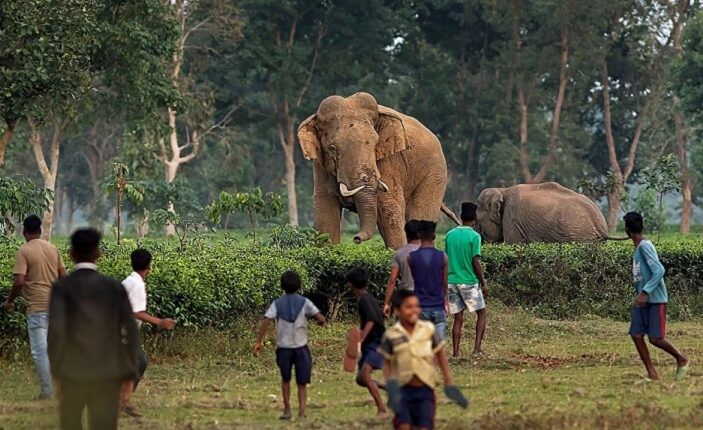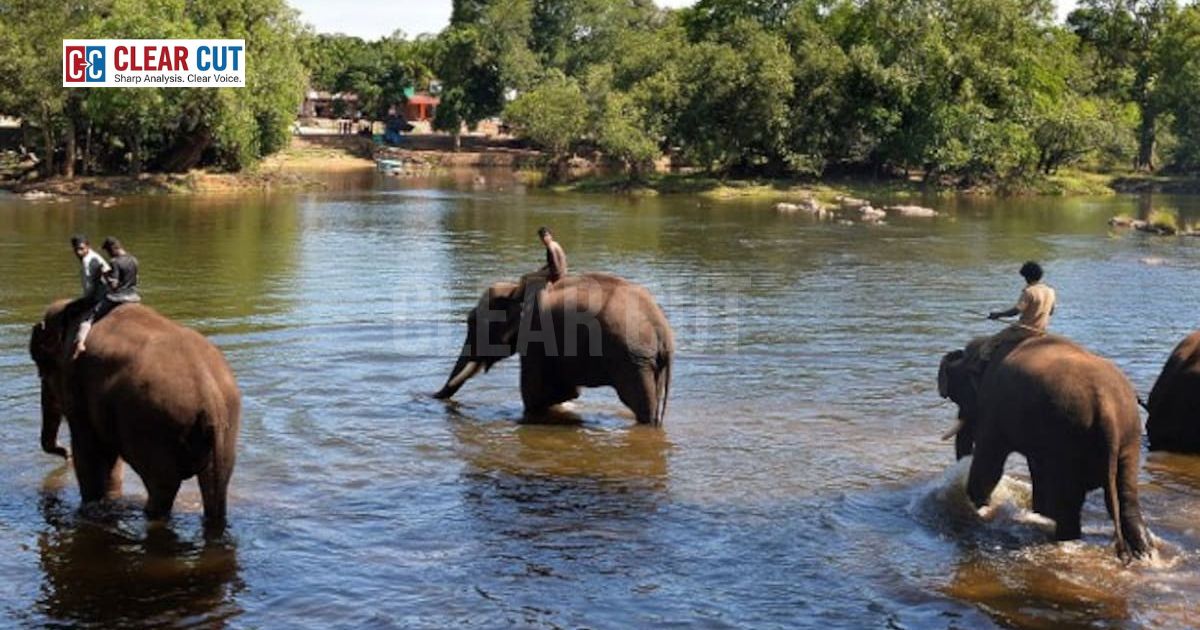Photo Credit: Antara Mrinal
Clear Cut Livelihood Desk
New Delhi, UPDATED: Sep 16, 2025 05:27 IST
Written By: Antara Mrinal
Human-wildlife conflicts are increasing across India. The greatest impacts are felt in the forest edges and villages in the Himalayan foothills, the Western Ghats, Assam, and Karnataka. As wild habitats are lost and climate pressures expand, wild animals are being forced into the human landscape. Such interactions lead to death and injury, loss of trust, and social and economic losses. There are, however, new pathways to shared existence if only we are willing to notice.
The Toll Is Rising: Hard Data Is Showing the Threat
In Uttarakhand from 2000 (when the state was created) until 2022, 1,054 people have died and 5,112 people have been seriously injured in encounters with wildlife. In 2022, there were 82 deaths and 325 injuries (The Times of India). In Karnataka from 2010-11 until March 2024, 618 people have been killed due to human-animal conflict, an average of about one person per week (The Telegraph). Elephants are the primary cause of mortality; other animals such as leopards, brown bears, wild boar, and tigers are also contributors.
These are not isolated events. In 2024, there were 64 fatalities and 342 injuries due to 406 conflict incidents reported in Uttarakhand, with the months of July and August being particularly fatal (Garhwal Post). In Karnataka over a five-year period, there were 254 fatalities from wildlife attacks – 70% of these due to elephants, tigers, or leopards (Paryawaran).
These numbers are indicative of a trend; conflicts increasing in number and severity, especially where human settlements border wildlife movement corridors.
Why Conflict Rises: Understanding the Drivers
Several compounding dynamics are forcing wildlife into human spaces:
Habitat fragmentation – Forests are severed at multiple points by roads, farms, and settlements. Animals lose migratory corridors or migrate unpredictably, and or enter into villages in search of food.
Scarcity of resources- Deforestation, climate change, and altered land use reduced their natural prey and food source, forcing animals towards crop fields, livestock, and even garbage.
Encroachment and unsafe infrastructure- Homes and farms closer to forest edges; poorly secured fencing; open above ground power lines that can electrocute animals; and lack of early warning systems.
Wins and Warnings
Assam’s Gajah Mitra Scheme:
Assam has suffered under one of the most severe human-elephant interactions. Between 2000 – 2023 over 1,400 human deaths and 1209 elephant fatalities were reported in the state (The Times of India). In July 2022, the state government approved the Gajah Mitra scheme focusing on 80 identified conflict hotspot since and across 8 districts. The plan included stocking forage plants preferred by elephants (bamboo, napier grass), piloting rapid response teams during peak conflict seasons, community involvement and monitoring, restoring UC in more appropriate ways, and monitoring habits and safety of installations above electrified fencing. This project, for human mitigation, provides the best approaches or recommendations to lessen fatal conflicts and increase elephants desire to remain stable in periphery corridors.

Karnataka’s Barriers & Compensation Promise:
Karnataka, a South Indian state, has led toward barriers or preventative infrastructures. The Karnataka forest department implemented railway barriers, solar fencing, and trenches, provided funds (e.g. Rs 100 crores in 2023 – 24) for conflict mitigation near forest. There was also an effort and promise to ensure compensatory damages, and a defensive or actionable alert monitoring system was being enhanced in communities with community action and consultation groups. However, the claims in the backlog appeared to be in crores which left the affected communities with increased frustration.
What Coexistence Looks Like in Practice
Transitioning from reactive ways of dealing with wildlife issues to developing strategies that can lead to long-term solutions requires a comprehensive view with a holistic action plan. Early warning and monitoring systems, including GPS collars, camera traps, or even local informants can give communities a heads-up when certain wildlife is near to help prevent surprises. We also need to invest in wildlife compatible infrastructure where we are fencing off resources, insulating power lines, digging trenches, as well as remembering to maintain safe corridors of movement for animals. Alternative livelihoods can contribute to long-term coexistence making it viable: buffer cropping that entices elephants instead of the elephants being poisoned, working with communities to monitor their land, and all time, timely, and fair compensation for any lost crops or livestock. Restoring habitats and planning land use to reconnect corridors is equally important, as it allows animals to move long distances without crossing farms or villages. Most importantly however, long term, continuous funding must be allocated for wildlife policies that are designed with a clear long-term vision, by so taking the interventions and responses from being knee jerk reactions to achieving long-term strategies to establish peace with wildlife.
Conflict is not inevitable. If governments, communities, conservationists, etc., embrace new models where responsibility and benefits are shared, we can achieve coexistence. That means taking a planned approach rather than a reactive approach; designing landscapes that meet the needs of both humans and wildlife; developing policies that match reality; and embracing the voices of local people in the decision-making process.
India’s forests and wildlife are a collective heritage. With knowledge, tools, foresight, and compassion, the scope for moving from conflict to coexistence becomes real. We can live with wildlife rather than in conflict with it.




